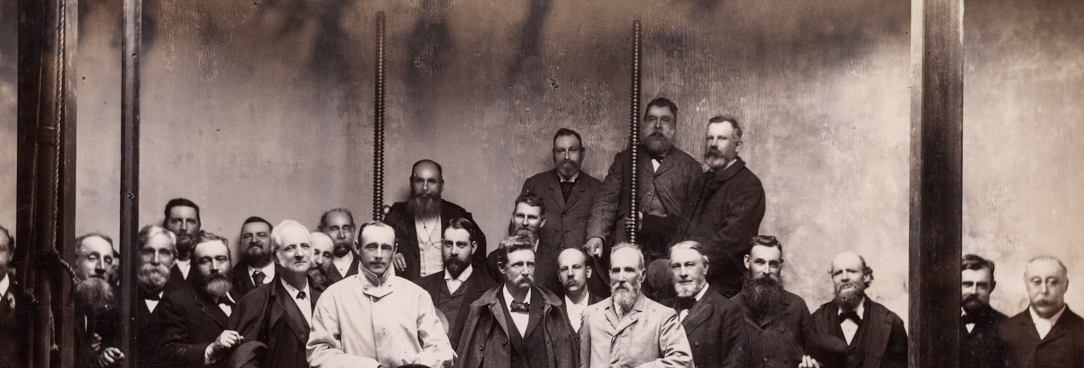Education resources on Melbourne's water history
The Water Stories online exhibition displays original records from our collection to explore the development of the first water storage, the Yan Yean Reservoir, the creation of the four parks that surround the city (Fitzroy, Exhibition, Flagstaff and the Botanic Gardens), the development of an innovative sewerage system for the city at Spotswood and Werribee, and the transformation of the Yarra River from a pristine source of drinking water into a shunned and polluted sewer, and then its slow return to being a central focus for the city.
This exhibition can be incorporated into learning experiences about sustainability, river systems, pollution, human impact on the environment, historical issues surrounding water resources, as well as current environmental concerns and ways to address them. Curriculum connections and classroom ideas are available to accompany the Water Stories exhibition.
Water Stories provides students with access to digitised primary sources including records, maps and photographs that provide ways of visually understanding how and why Melbourne’s water supplies, rivers and landscapes developed.
Classroom ideas
Education Activities
The following activities are designed to connect with specific sections of the Water Stories exhibition. They are most suitable for students in Years 5 – 8.
Water Stories: Dams, Pipes and Sewers
Smellbourne
- Why was Melbourne once referred to as ‘Smellbourne’?
- How was sewerage collected in the 1800s in Melbourne? Where was it dumped?
- What did the Melbourne and Metropolitan Board of Works (MMBW) build to help stop the sewerage problems?
- Investigate the health issues before and after the sewerage plant was built.
Werribee Farm
- What were the reasons Werribee was chosen for a sewerage farm?
- Research the changes that have taken place over the past centuries to the Werribbee treatment farm.
- Investigate different methods of treating sewerage now.
Yan Yean Reservoir
- Why was the Yan Yean Reservoir built?
- Why were there water shortages in Melbourne in 1859?
- What did the government do in 1859 to combat the water shortages?
- Compare the water restrictions of 1859 with those introduced by the government in 2004-2012.
- Consider the various options people now use to save water.
- Investigate and discuss the issues of water quality in the past and in the present.
- Investigate and discuss the environmental impact of using bottled water today.
- What would happen if Melbourne did not have enough drinking water for everyone that lived there?
Water Stories: A Garden City
Fitzroy, Exhibition, Flagstaff and the Botanic Gardens
- Why did Superintendent Charles La Trobe think park lands were essential for the new city
- Many interesting fountains, memorials, statues and buildings can be found in Melbourne’s parks. Choose one and investigate its history.
- Why was the Carlton Gardens and the Royal Exhibition Building given UNESCO World Heritage status in 2008?
- What impact did the prolonged drought had on the parks and gardens around Melbourne?
- Read the webpage about Public Record Office Victoria’s rainwater harvesting project and discover what they are doing to help Melbourne’s water problems. How is the PROV tank water being used? Investigate what other similar schemes are being developed to improve water usage.
- Why was Victoria called the ‘Garden State’?
- Why trees are important to Melbourne? Consider what the city would look like without its street trees. What would the environmental impact be?
- If Victoria’s climate was to warm up, what would be the consequences for its landscapes, gardens and towns?
Water Stories: The River Yarra
Cleaning up, Taming the River, Then and Now
- What is the name for the Yarra River used by the local Aboriginal peoples?
- Study the early maps of the river and compare the course of the river today. Why has the river changed?
- How and why was the Yarra River so badly polluted and neglected?
- Describe some of the maritime industries associated with the river.
- Does the river still flood? Choose a Yarra flood and investigate its impact.
- What are the likely consequences of global warming on river flood events?
- Investigate what you can do at a local area to stop the pollution of the Yarra River and local creeks? Why is this important?
Learning Outcomes
Students will:
- discover how primary documents are evidence of history
- investigate original State Government records from the PROV collection
- analyse the impact of people and attitudes to water and the environment
- identify key forces for change and continuity over time.
